Economy
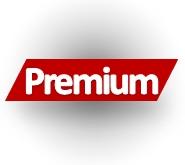
PPI Data: October’s Growth Rate Slows, Steel’s Slump Continues
Written by David Schollaert
November 18, 2022
Producer prices came in below expectations in October, adding to hopes that inflationary pressures are beginning to ease, the US Labor Department reported.
Last month’s Producer Price Index (PPI), a measure of the prices received for final-demand products, advanced just 0.2% month-on-month (MoM) and 8% from a year ago, the smallest annual gain in more than a year, according to data from the Bureau of Labor Statistics (BLS).
The result was slightly lower than the consensus estimates of 8.3% for the period. October’s rise marks another month of PPI falling below the previous year-over-year (YoY) increase.
If the slower price growth from last month continues — an indication that inflationary pressures are beginning to ease — the Fed may start to slow their interest rate hikes. The central bank has increased interest rates by 0.75 percentage points four times in a row to slow the economy and tamp down price increases. It might finally be paying off.
The PPI data, which covers more than 10,000 goods and services, is helpful in comparing the direction of price changes in the short and medium term. This analysis is intended to provide subscribers with a view of the relative competitive positions of sheet steel, aluminum, plastic, and wood. It also includes some downstream products and a comparison of truck and rail transportation.
The composite PPI for all commodities (Figure 1) weakened at the onset of the pandemic in 2020, tumbling by more than 4.0%. The US economy has recovered well since then, but inflationary pressure has taken hold.
One significant contributor to the slowdown was a 0.1% decline in the services component of the index, the first outright decline in that measure since November 2020. Final demand prices for goods rose 0.6%, the biggest gain since June, driven primarily by the rebound in energy.
SMU’s benchmark hot-rolled coil price stood on average at $710 per net ton ($35.50/cwt) FOB mill, east of the Rockies, as of Oct. 25, down $65 per ton from the month-ago report. Despite some relative stability in August and September, HRC prices have been falling since reaching their most recent peak of $1,480 per net ton on average in mid-April. PPI prices have moved in the opposite direction, driven by rising inflation for most other goods.
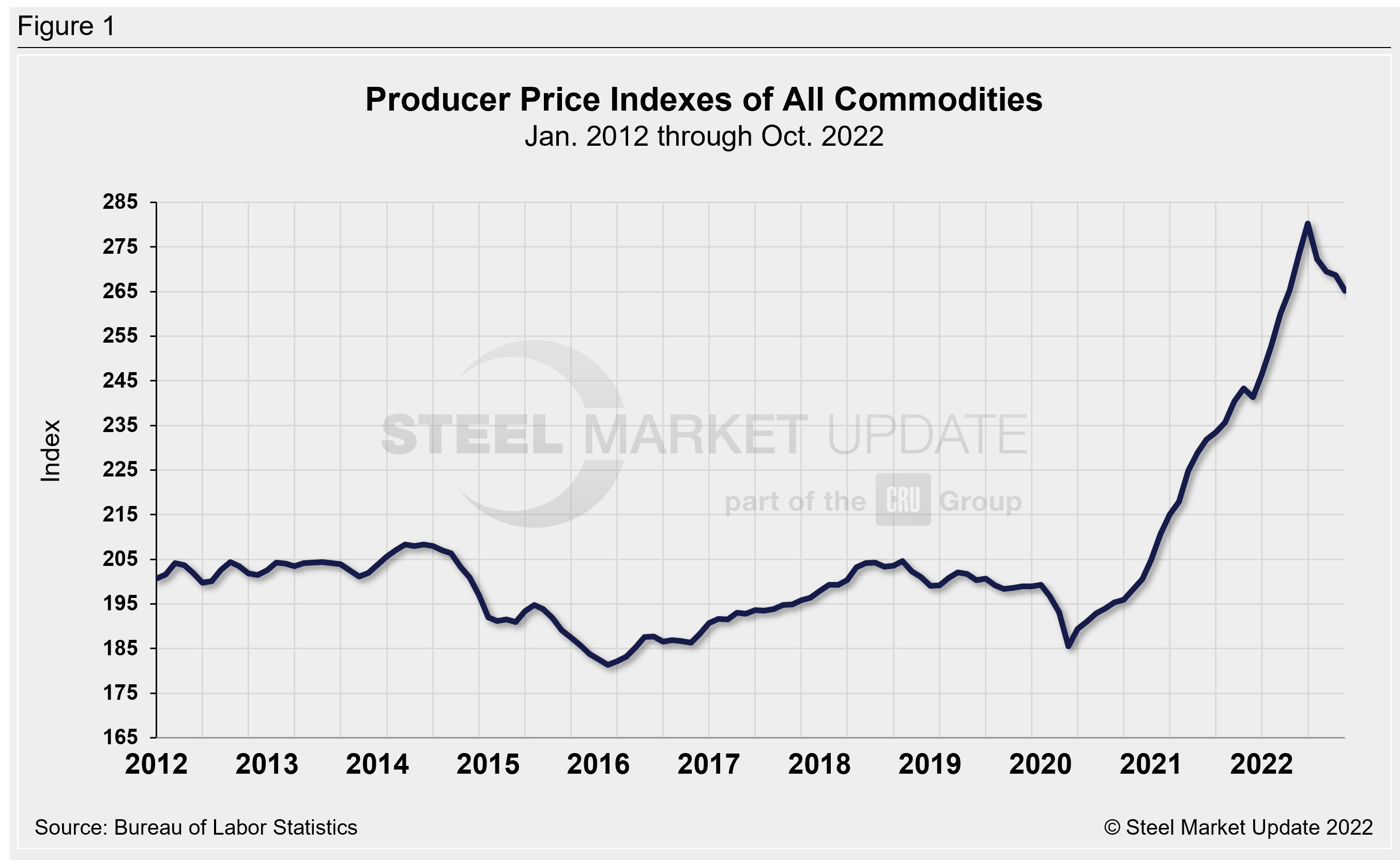
A summary of each segment’s change on a one-, two- and three-year basis are shown in the table below. The gain/loss pattern is shown by the color codes. Rising prices are considered positive. The positive swing on a 12- and 24-month basis is no surprise, given a strong recovery following Covid lockdowns in 2020. The growth at 36 months, however, is significant. The clear surge not only reinforces this historic recovery but also the inflation that has taken hold.
The table includes direct comparisons where possible between steel and competing products, such as plastics. It also includes transportation, warehousing, and storage to better contextualize current market conditions. The decline in cold-rolled sheet and aluminum sheet prices are hard to ignore, while construction-related products are up anywhere from 10.9% to 22.1% at the 12-month level, with similar increases for the 24- and 36-month periods.
The market has been resilient despite the impact of rising inflation, which has been significantly higher than forecasted. But the rate of price gains for some products has slowed despite continuing supply-chain bottlenecks, and in some cases has started to slip.
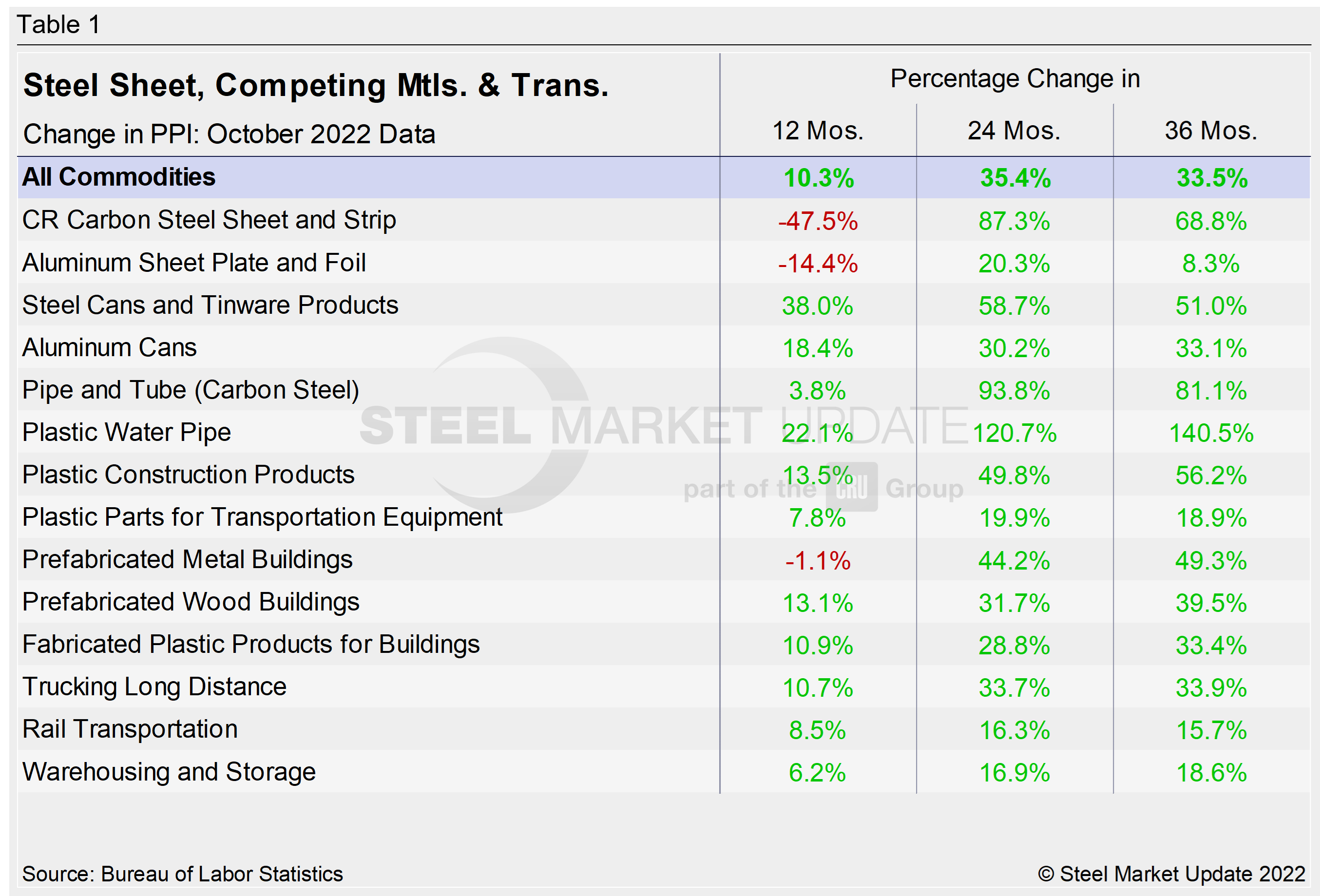
Both steel and aluminum products (Figure 2) had easily overtaken pre-pandemic PPI figures, reaching unprecedented highs. They saw additional support in the early days of the war in Ukraine, sparked by concerns about raw materials prices and additional supply-chain disruptions. As the shock of the war faded, prices retreated.
The trajectory in cold-rolled steel sheet prices overshadowed the impressive rebound in flat-rolled aluminum. But the decline has also been as precipitous as the rise, declining at an unprecedented rate.
Both cold-rolled steel sheet and flat-rolled aluminum fell in October versus the prior month. Cold-rolled steel prices declined 16.5% MoM in October, while flat-rolled aluminum declined by 3.6% over the same period. Cold rolled is down 25.4% YTD and down 47.5% YoY.
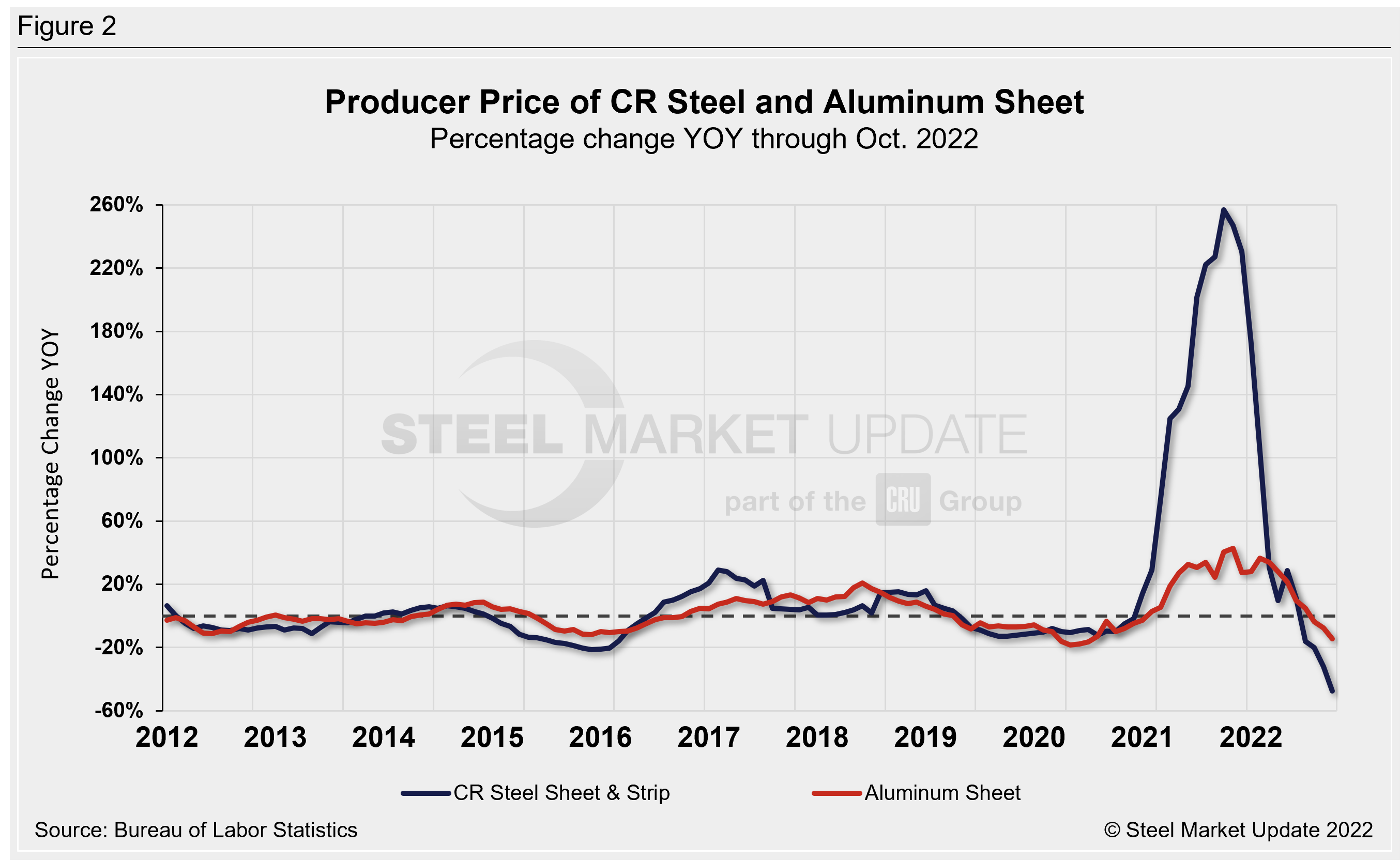
Prices of prefabricated metal buildings and prefabricated wood buildings have both seen significant increases since the beginning of 2021 and carrying into 2022. The rate of growth has turned with repeated decreases over the past two months.
Prefabricated steel building prices have seen a complete collapse YoY, 1.1% over the past 12 months and down 2% MoM. Prefabricated wood buildings have been a bit more buoyant over the same period. Though down 1.2% MoM, they remain up 13.1% YoY, and a major driver of elevated input costs in the construction sector.
The prices of steel and plastic pipe have both experienced big swings because of the pandemic. Plastic pipe prices are up, but the growth rate has slowed. Steel pipe prices have declined, in-line with the same trend seen across most steel products.
Steel pipe prices slipped 2.8% MoM in October, but were still up 3.8% YoY. Plastic pipe prices were up 0.3% and 22.1% over the same period. Figure 3 is a side-by-side comparison of prefabricated buildings and pipe price dynamics.

The growth of truck transportation prices has far exceeded that of rail since they both bottomed out in June 2020, though trucking has seen a major step down since May. Rail has also seen a decline in its rate of rise over the same period, though far less accentuated. Long-distance trucking is down 2.2% MoM in October but still up 10.7% YoY, while rail is down 0.6% yet up 8.5% over the same period.
Warehousing and storage prices also have risen but have fluctuated for much of 2022. They have been erratic at times but have been on a sharp decline since August. Last month’s reading of 128.5 is down 1.4% MoM but still up 6.2% YoY. Figure 4 is a side-by-side comparison of transportation and warehousing dynamics.
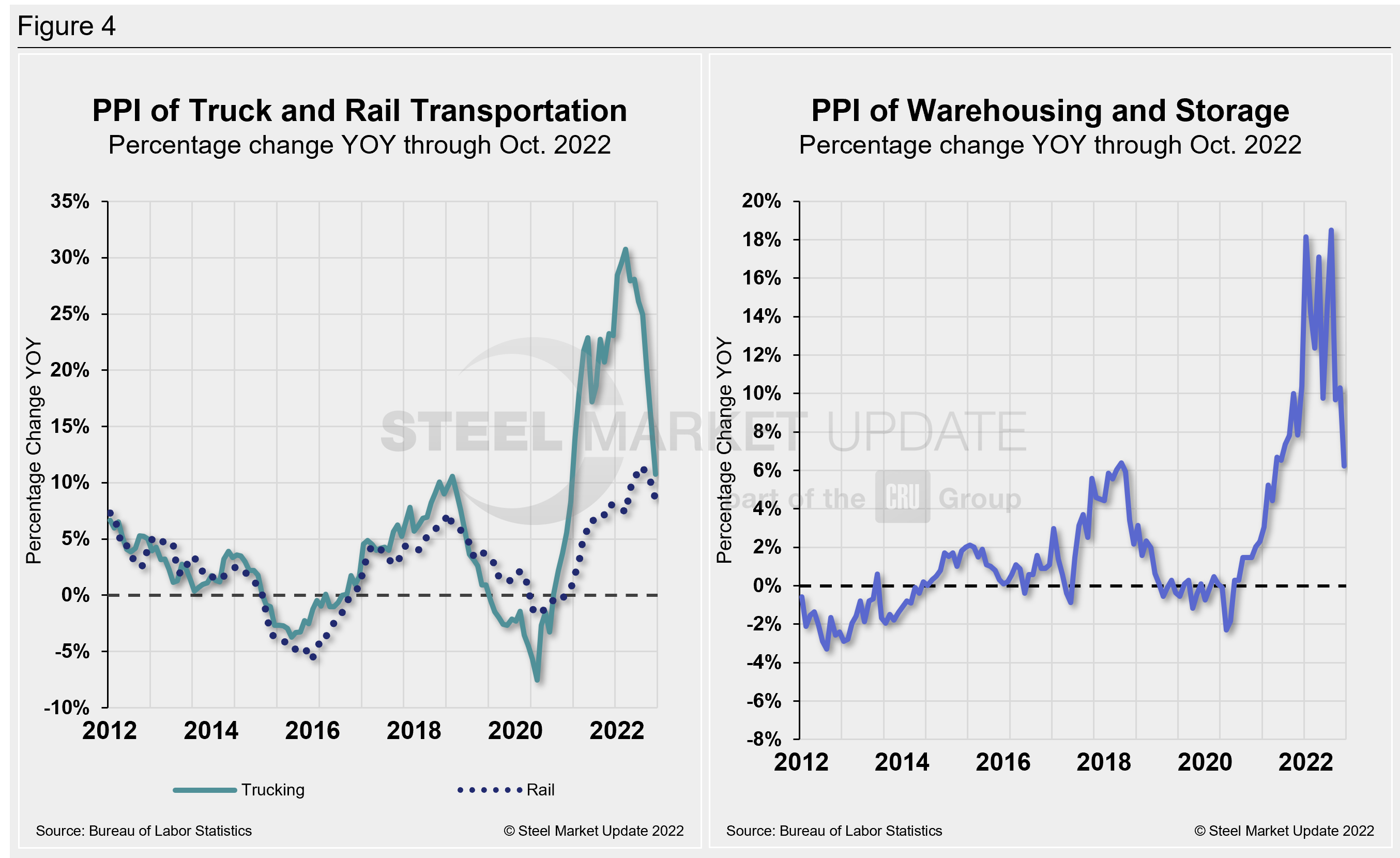 The official description of this program from the BLS reads as follows: “The Producer Price Index (PPI) is a family of indexes that measure the average change over time in the prices received by domestic producers of goods and services. PPIs measure price change from the perspective of the seller. This contrasts with other measures, such as the Consumer Price Index (CPI). CPIs measure price changes from the purchaser’s perspective. Sellers’ and purchasers’ prices can differ due to government subsidies, sales and excise taxes, and distribution costs. More than 10,000 PPIs for individual products and groups of products are released each month. PPIs are available for the products of virtually every industry in the mining and manufacturing sectors of the US economy. New PPIs are gradually being introduced for the products of industries in the construction, trade, finance, and services sectors of the economy. More than 100,000 price quotations per month are organized into three sets of PPIs: (1) stage-of-processing indexes, (2) commodity indexes, and (3) indexes for the net output of industries and their products. The stage-of-processing structure organizes products by class of buyer and degree of fabrication. The commodity structure organizes products by similarity of end use or material composition. The entire output of various industries is sampled to derive price indexes for the net output of industries and their products.
The official description of this program from the BLS reads as follows: “The Producer Price Index (PPI) is a family of indexes that measure the average change over time in the prices received by domestic producers of goods and services. PPIs measure price change from the perspective of the seller. This contrasts with other measures, such as the Consumer Price Index (CPI). CPIs measure price changes from the purchaser’s perspective. Sellers’ and purchasers’ prices can differ due to government subsidies, sales and excise taxes, and distribution costs. More than 10,000 PPIs for individual products and groups of products are released each month. PPIs are available for the products of virtually every industry in the mining and manufacturing sectors of the US economy. New PPIs are gradually being introduced for the products of industries in the construction, trade, finance, and services sectors of the economy. More than 100,000 price quotations per month are organized into three sets of PPIs: (1) stage-of-processing indexes, (2) commodity indexes, and (3) indexes for the net output of industries and their products. The stage-of-processing structure organizes products by class of buyer and degree of fabrication. The commodity structure organizes products by similarity of end use or material composition. The entire output of various industries is sampled to derive price indexes for the net output of industries and their products.
By David Schollaert, David@SteelMarketUpdate.com

David Schollaert
Read more from David SchollaertLatest in Economy

Architecture billings continue to slide in March
Architecture firms said billings continued to decline in March, according to the latest Architecture Billings Index (ABI) released by the American Institute of Architects (AIA) and Deltek.

Beige Book shows concerns about trade policy
Manufacturing was mixed, but two-thirds of districts said activity was little changed or had declined.

New York state manufacturing index drops again in April
Firms were pessimistic, with the future general business conditions index falling to its second lowest reading in the more than 20-year history of the survey

Construction adds 13,000 jobs in March
The construction sector added 13,000 jobs, seasonally adjusted, in March, but tariffs could undermine the industry.

Supply chains, end-users brace for impact from tariffs
Supply chains are working through what the tariffs mean for them
